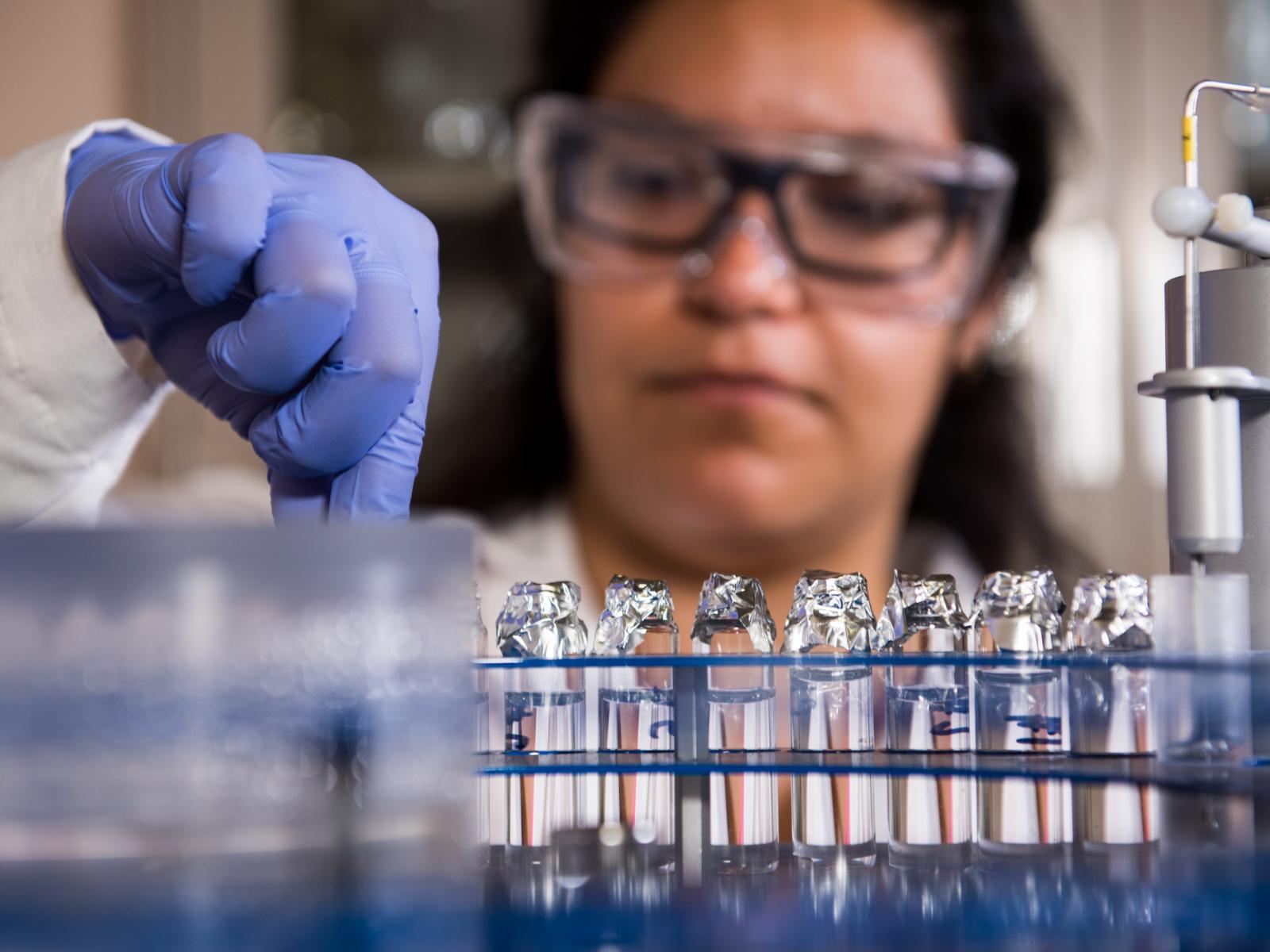Chemical & Molecular Science

Sonia Alcantar Anguiano is wrapping up her second Science Undergraduate Laboratory Internship (SULI) at PNNL. During her internship, she prepared microbial soil samples in a lab at the Environmental Molecular Sciences Laboratory. PNNL recently hired Sonia as a researcher for the National Security Directorate.
Andrea Starr | Pacific Northwest National Laboratory
The chemical and molecular sciences core capability advances the understanding, prediction, and control of chemical and physical processes in complex, multi-phase environments. We have significant expertise in condensed phase and interfacial molecular science, chemical physics, catalysis science, chemical separations and analysis, geochemistry, computational chemistry, and actinide science. This core capability has strong ties to the condensed matter physics and materials science, computational science, and the applied mathematics core capabilities. We leverage expertise in those areas to advance understanding of complex phenomena at molecular liquid-solid interfaces and produce high-fidelity simulations of molecular processes controlling macroscopic phenomena.
We steward the largest basic research effort in the national laboratory system in catalysis science and condensed phase and interfacial molecular science, which are the foundations of PNNL’s Institute for Integrated Catalysis. These capabilities were essential for the award and renewal of an Energy Frontier Research Center in Molecular Electrocatalysis. Contributing to PNNL’s strength in this area is NWChem, a unique computational chemistry software application developed and hosted by PNNL’s Environmental Molecular Sciences Laboratory. NWChem is used by researchers worldwide to solve molecular science problems.
We expect to commence construction soon on a new chemistry facility at PNNL, the Energy Sciences Capability project. This facility will consolidate several PNNL’s research groups to accelerate scientific discovery in chemical transformations by enabling close integration of synthesis with dynamic characterization capabilities and real-time computation capabilities.
This capability is the basis for PNNL’s fundamental science programs in catalysis science, condensed phase and interfacial molecular science, computational and theoretical chemistry, geosciences, and separations and analysis. Applied programs include improved energy technologies, catalysis and reaction engineering, hydrogen storage, biomass conversions, environmental remediation, and carbon capture and sequestration.
This core capability is managed for several Department of Energy offices: the Office of Science, Basic Energy Sciences, Biological and Environmental Research, Fossil Energy, the Office of Environmental Management, the Office of Energy Efficiency and Renewable Energy, and the National Nuclear Security Administration. The capability also benefits the Department of Health and Human Services and the Department of Defense.